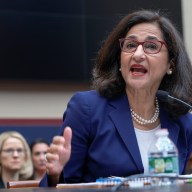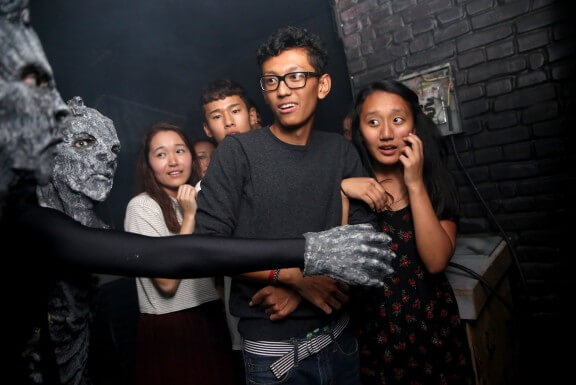 Adele Exarchopoulos and Lea Seydoux play lovers in “Blue is the Warmest Color.”
Adele Exarchopoulos and Lea Seydoux play lovers in “Blue is the Warmest Color.”
Credit: Sundance Selects
There are only a handful of theaters that, starting tomorrow, will be playing “Blue is the Warmest Color,” the French relationship saga that won this year’s Palme d’Or and has since generated mounds of breathless press. That isn’t because of its accolades (including the special Cannes award handed to its two lead actresses, Adele Exarchopoulos and Lea Seydoux). It’s because about 10 minutes of its three hours are devoted to, shall we say, “realistic” sex scenes between the two actresses. Rather than make cuts, its American distributor, Sundance Selects, has released it as is, embracing the dreaded/coveted NC-17 rating.
But one of the theaters showing it will not be sticking to the NC-17 law (which is, incidentally, not a law). IFC Center, in New York City’s Greenwich Village, will allow teens not yet 17 to buy a ticket. It is, after all, about a teen (Exarchopoulos) coming of age and entering adulthood. (In fact, though her character ages to be about 24, Exarchopoulos is in real life still 19.)
This has caused inevitable controversy, some of it calmed/inflamed by The New York Times’ A.O. Scott. The critic wrote an op-ed defending the decision, saying that his own 14 year old daughter has already seen it twice.
“My permissiveness has raised some eyebrows among friends and colleagues, and I am not necessarily holding myself up as a role model,” Scott admits. “You have your own rules, and your own reasons for enforcing them, and naked bodies writhing in ecstasy may not be something you want your kids to see. But in some ways, because of its tone and subject matter, ‘Blue’ is a movie that may be best appreciated by viewers under the NC-17 age cutoff.”
In addition to suggesting that a coming-of-age tale about a teenager (albeit one who grows to be around 24) should be seen by teenagers, Scott also points out that in France, the rating is a “12,” meaning that, yes, anyone over 12 can pay to see it. But surely some in America will take umbrage with comparing our mores with Europe’s, where matters are stereotypically more lax.
Perhaps refreshingly unmentioned in the piece — because it’s the largest elephant in the room — is whether parents would be cooler with their teens watching horrifically violent films, but not ones in which two people who at least like (and then love) eachother very much do their best to bring the other the most, ahem, happiness.

















